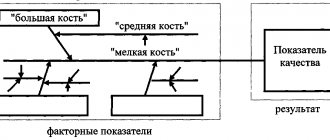Synectics is a method of combining diverse, often completely incompatible elements when posing a problem and finding solutions. Have there been times in your life when solving problems came to a dead end? Dozens of options have been considered, but the process still stands still? In such cases, the synectics method is an excellent choice. It allows you to see the situation from the other side. Using this technique will help you find an unexpected, perhaps incomprehensible or absurd solution. But does it matter what it looks like if the problem is solved?
Background
Synectics is a method of group generation of ideas based on combining dissimilar and even incompatible elements in solving creative problems.
The technique was developed in the USA by William Gordon together with George Prince in the early 1950s. In 1952, a research group at Harvard University in Cambridge, Massachusetts, led by William Gordon, discussed the methodology and practice of brainstorming. An assumption has emerged that individual creativity has many analogies with collective creativity. And through analogies, everything, even the most dissimilar, turns out to be connected with each other, physically, psychologically or symbolically. A new technique was formed, called Synectics (translated from Greek as “connection of dissimilar elements”).
In 1960, Gordon put the methodology into practice and founded a consulting company in Boston, which currently provides services in teaching creative thinking and developing innovative ideas. And in 1961, the author outlined his concept in the book “Synectics: Developing the Creative Imagination,” which became a world bestseller among business publications.
Advantages and disadvantages of synectics
The synectics method, which refers to the brainstorming technique, has a number of advantages. Here are some of them:
- Productivity. A properly assembled synectic group and a non-standard approach work faster than other techniques for solving assigned problems.
- The process of finding solutions is carried out as efficiently as possible. Synectics involves using all types of thinking at once. Each participant maximizes their potential. Other methods cannot boast such achievements.
- The team is constantly developing. Not only does it solve countless problems. Each group member gains experience, learns something new, and finds a common language with colleagues. This has a beneficial effect on the company's work.
- Extraneous costs and random factors are reduced. During a classic brainstorming session, a lot of time is spent listing options for solving a problem. In synectics, group members criticize each other's statements. As a result, they find real solutions that are applicable in a given situation, rather than listing everything that comes to mind.
Features of the method
Synectic methodology is based on the socio-psychological motivation of the intellectual activity of the team and sets targeted activity. The main tool in solving creative problems is analogies that connect new and known information. Thinking develops through visualization and the use of comparisons.
A distinctive feature of synectics is that the technique is designed to solve specific problems, and is not aimed at finding universal, systematized patterns. The analysis of the problem is carried out by a team of specialists who have already worked together. In synectics, criticism is encouraged; team members who are accustomed to working together perceive it adequately.
As a rule, a permanent group of 5-7 people is formed, of different professions, with at least two specializations, preferably the most paradoxical ones (chemist-literary critic, engineer-geographer, etc.). It is equally important that the group members have different temperaments and characters.
Stages of synectic solution
The search for new ideas using the synectics method is carried out in 8 stages. Each of these is explained in detail in William Gordon's book.
- To begin with, identify the problem. None of the participants knows her. Information is available only to the manager. It is not disclosed by accident. If a person knows everything in advance, it is difficult for him to switch from the usual way of solving problems to a creative, creative one. The problem is covered in general terms.
- At stage 2, the problem is divided into parts. The most complex ones are divided into small ones.
- Group members study the issue, analyze the details, and draw conclusions. To do this, they use previously obtained information.
- Now it's time to select analogies and metaphors. In synectics, this is a way to understand the essence of the problem, to consider it from the inside.
- The next stage is to study the problem from an unusual angle.
- Participants will have to tell how they understood the situation. Here again analogies come into play.
- The most appropriate analogy is identified with the task at hand. As a result, any restrictions are removed and boundaries are expanded.
- This stage involves searching for solutions. Group members need to find a suitable option and express ideas about it. The solution is then projected onto the problem.
Analogies
The stage of generating new ideas is carried out by bringing four types of analogies:
- Direct - the object is compared with similar objects from other areas: culture (approx. meaning - a manifestation of human activity) and nature;
- Personal - comparing yourself with an object, you need to mentally merge with the object;
- Symbolic - to present a metaphorical image of an object that reveals its properties. A paradoxical phrase is formulated that reflects the essence of the phenomenon;
- Fantastic - fantastic conditions are introduced into the problem being solved. Having found a fantastic solution, it is analyzed what prevents it from being applied under normal conditions, and how to remove the obstacle.
How does the synectics method work?
As stated above, the essence of the synectics method is to search for analogies. They come in 4 types:
- Direct. These are similar features of objects used to solve similar problems. This includes the similarity of natural data or technical characteristics. Imagine that you are faced with the task of improving the process of painting furniture. But you don't know how best to do it. Draw an analogy with coloring other objects. Let it be, for example, paper. Or think about the colors of flowers and animals.
- Symbolic. You need to see metaphors and paradoxes in ordinary things. Here synectics offers to look at the familiar from an unusual angle. This type of analogy is often used in art. It often appears in everyday life. Take, for example, the familiar phrases “living dead” or “guilty without guilt.”
- Personal. Try to identify yourself with the phenomenon or object being studied. Put on its functions and characteristics. This will help change your perspective on things. At first, such analogies will seem ridiculous and even meaningless. However, this is an opportunity to see new facets and sides of the subject. Such an analogy requires rich imagination and developed imagination.
- Fantastic. In the case of this analogy, you can use all your imagination. Imagine the object in the most fantastic or even unrealistic conditions. Let him be free from physical laws. Be a science fiction writer. Perhaps at this moment you will see how to solve the problem without being tied to the existing reality.
Using the analogies listed above, you will use all types of thinking. Thanks to this, you will see the full picture of what is happening.
Synectics in design
Nicolas Royux adapted the technique to the field of design and in 1981 published the book “Design Synectics. Stimulating Creativity in Design”, where he outlined the main features of perception. Today, synectics is used in design as a theoretical basis for shaping.
The main concept of synectics in design is the use of analogies, i.e. discovering similarities in dissimilar things. To stimulate the process of creating new connections and synthesizing ideas, it is proposed to use 23 triggers.
How to create a synectic group
Group formation occurs in 3 stages:
- The first step is to select participants. They undergo special tests, the results of which determine the level of erudition, education, ability to think outside the box, and knowledge in certain areas. It is better if candidates have different professions. Preference is given to those who have two specialties that are incompatible with each other. An example is an engineer-economist or a physicist-doctor.
- The second stage is training. In Russia, the synectics method is not popular. Therefore, there are no methodological and educational developments concerning it. And the experience of other countries is ignored. There are special institutions abroad that are engaged in training synectic groups. The process takes a year. Face-to-face classes are held in the centers. This is a theory. Then practice begins. “Students” go to their enterprises to solve real problems.
- At the last stage, the prepared group is introduced into the company.
Sometimes company management decides to create a synectic group from its employees. Another option is to order a ready-made team for one-time or regular cooperation.
Triggers
Each trigger focuses on building new connections:
| 1. Subtraction | 2. Addition | 3. Transfer |
| 4. Empathy | 5. Animating an object | 6. Overlay |
| 7. Changing the scale | 8. Substitution | 9. Fragmentation |
| 10. Insulation | 11. Distortion | 12. Disguise |
| 13. Opposition | 14. Parody | 15. Prevarication |
| 16. Analogies | 17. Hybridization | 18. Metamorphoses |
| 19. Symbolism | 20. Mythology | 21. Fantasies |
| 22. Repetition | 23. Combination |
Analogies are divided into logical and psychological:
brain teaser
| Name | Example |
| Structural | Anthill, termite mound, honeycomb - multi-apartment residential complexes. |
| Functional | Mushroom cap – mechanical design of umbrellas, umbrella gazebos. |
| Phenomenal | Natural color camouflage - camouflage |
Psychological
| Name | Example |
| Sensory | Sots art in interiors. For example, the poster “The Motherland is Calling!” - song “Get up, huge country.” |
| Empathic | Flying figures in Chagall's paintings. |
| Symbolic and metaphorical | Stylized interiors with an abundance of motifs and symbols: ancient Greek, ancient Egyptian, oriental. |
| Fantastic | Surreal interiors, objects and accessories in the style of Dali, Picasso, Moominvalley. |
Brief summary
Today, the description of the synectics method and its stages have been greatly simplified for understanding and it all seems easy to use. However, in reality it is quite difficult to use the synectic method. In addition, to use it effectively, training groups of synectics must continue for at least a year.
If a businessman or the head of a large organization decides to resort to the synectics method, he will need to find specialist synectics who can train staff in all the features and nuances of the method. But any ordinary person in the process of finding solutions to problems or creative problems can simply apply analogies, which are an integral and most important part of the synectic approach.
We wish you creative success!
We also recommend reading:
- Storytelling
- Basics of Brainwriting Technique
- Affinity diagram for solving management problems
- Invention: a selection of useful materials
- Methods for evaluating ideas
- 10 Best Idea Generation Techniques
- ABC analysis
- Charette procedure
- Delphi method and its application
- 8D technology for finding solutions
- A selection of useful materials about creativity and creativity development
Key words:1Cognitive science
Working conditions
To successfully carry out the synectic procedure, you need:
— mandatory initial abstraction of group members from tasks and problems; - restraint of expressed opinions and refusal of a final conclusion; — ease and naturalness in discussions; — predisposition to modeling and acting out the situation; — rationality of judgments.
As can be seen, in the initial stage of the synectic procedure, metaphors, analogies and images find their use. Rationality appears only at its final stage.
Education
This phase of forming a group of synectics requires appropriate training among specialists in special institutions. For example, American companies have been conducting similar preparations for about a year. At the same time, selected specialists take several full-time and correspondence sessions.
Training is carried out by training centers, after which future synectors undergo practical training in the companies that hire them, during which theoretical and real problems are solved.
An example of using synectics to find a solution
As a practical example of the use of synectics, the situation of real application of the method by its direct creator, William Gordon, is best suited.
An interesting feature of this example is the real worldwide popularity of the invention with a fairly complete description of the process of finding solutions. Thus, the author of the method was hired by Kellogg to develop a solution to what at that time seemed to be an absolutely insoluble problem. William Gordon was faced with the task of developing a way to rationally place potato chips in a package so that air occupies a minimum part of the space, and, at the same time, the chips themselves and their shape would not suffer from the solution found. So, as part of the process of searching for analogies, a comparison was made between chips and autumn leaves collected in garbage bags. Dry leaves took up much more space compared to wet ones.
So, using this analogy, a fundamentally new possibility of making chips was considered by moistening potato flour and then creating the ideal shape of the chips, instead of simply thinly slicing the potatoes. It was thanks to this decision that the world famous Pringles chips arose, which can now be found on supermarket shelves almost all over the world.
Operating Mechanisms of Synectics
Participants in synectic groups have to work with a wide range of tools, including operational mechanisms. In particular, this can be a game with metaphors, in which, again, analogies are used that are similar to the problem posed. Typically, the main goals of such work include the transformation of the familiar into the unfamiliar. In other words, frameworks and barriers are eliminated, which makes the method more effective. Synectics makes it possible to understand a problem in a new form and from an unusual point of view. It is noteworthy that it is impossible to teach psychological tools. Mechanisms such as playing with intuition suggest the possibility of their use by every person on a conscious level.
Who to invite with you and why it works
It won't be possible to take anyone. Synectors undergo special training throughout the year. It can be done faster, but the result will be different. Usually, an expert is added to an already formed group of synectors, who is a specialist in the field of knowledge to which the problem relates. An expert can have two roles - either “encyclopedia” or “devil’s advocate”.
The main factor in the “workability” of the method is the achievement of several psychological states of the group:
detachment - involvement: we distance ourselves as much as possible from the problem and gradually immerse ourselves in the essence, procrastination - caution: no final conclusions or critical assessments, maximum abstinence and caution in judgments; reflections - looseness: we play with situations, approaches, create history; achievements - satisfaction: we feel the approach of a solution and pleasure from work, the result is close!
States can alternate in any order; the presence of all states in the work of a synectic group is mandatory.
Group Member Selection
At this phase, special tests are used. At the same time, special attention is paid to the presence of candidates with a wide variety of knowledge, general erudition, a sufficient level of education, experience in experimental activities and flexibility of thinking.
People from a wide variety of professions are selected to form a group of synectors. At the same time, it is desirable that they have two, at first glance, incompatible specialties. This could be, for example, a physicist-doctor, engineer-economist, chemist-musician, etc.
Definition of the concept
The word "synectics" has Greek roots. Literally it means the connection of different, at first glance, clearly incompatible elements. The main idea of synectics is to unite several creators into one group. This helps to jointly set and then solve a specific creative problem.
What is this method based on? Synectics makes it possible to use unconscious mechanisms that manifest themselves in a person’s thinking during his creative activity. Gordon, with his method, put forward a kind of protest against the traditional point of view, which, before his research, considered creativity as the primacy of the individual genius. Of course, the author did not at all deny the great role of “personal insight,” but on the other hand, he argued about the need for a “directed search” for the necessary solutions in the system.











